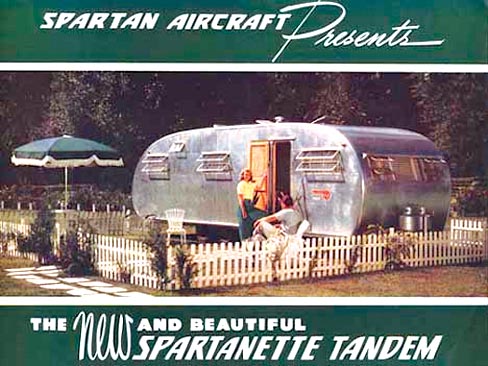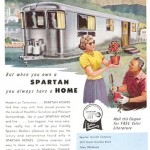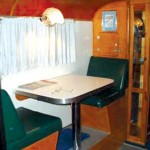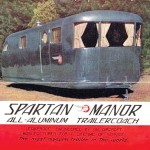By Randy Rundle
It happened two years before Oklahoma became a state. The Ida Glenn oil well number one located just southwest of Tulsa, Okla. came in a gusher. The Ida Glenn turned out to be a huge oil reserve, big enough to establish five major oil companies, Getty, Gulf, Standard Oil, Sinclair and Skelly.
Among those, the Skelly Oil Company, led by its founder William G. Skelly, would grow to be one of the world’s largest independent oil companies. By the early 1920s, William Skelly had become one of the richest men in the country. Besides oil and all things mechanical, Skelly developed an intense interest in aviation and aeronautics, learning all he could from every source available. He even went so far as to have the Skelly Oil Company sponsor aviation-related radio adventure programs, among them “The Air Adventures of Jimmie Allen, and “Captain Midnight.” The locals often referred to him as “Mr. Tulsa” for his generous financial support of many local projects and originations.
As a result of his interest in aviation, he founded the Spartan Aircraft Company, which was established as an aeronautical college and airplane manufacturing company. The company, like the oil business, was a growing success.
So much so, that in the mid 1930s the college and aircraft company attracted the attention of billionaire oil tycoon J. Paul Getty. Getty decided he liked what he saw and purchased the Spartan Airplane Company and the college, leaving the same management in place, but with one important change. Money was no object for the college and the Spartan Airplane Company. It was reflected in the quality of the airplanes the company offered under the new ownership.
One of the most lucrative airplane models to come out of the Spartan factory under the new ownership was the Spartan Executive, often considered one of the most luxurious planes ever manufactured. The interiors were very plush and comfortable, equal to the most opulent limousines of the day. The airplane could cruise at 200 mph and had a range of over one thousand miles. The planes soon became an aviation legend. Meanwhile Getty considered them a necessity for people of his rank and station.
The Spartan Airplane Company secured numerous war contracts during WWII and built numerous airplanes for the war effort. Soon after the war, however, the company found stiff competition from other manufacturers, many that were established as part of the war effort. With competition at every turn, the company decided to move in a new direction.
With the huge demand for housing after the war, Getty determined that mobile homes or “trailer homes” were the direction the company needed to go. Using the company’s previous airplane manufacturing experience, a prototype trailer home was built in the summer of 1945, using much of the same technology and many of the same design features used in building airplanes.
By mid 1945, a prototype model had been built and road tested, and a first production run of 100 units was ordered. The trailers featured high-end interiors much like the airplanes, with top-of-the-line appliances. No expenses were spared. Designed to be the Cadillac of trailers, Spartan trailers sold for a hefty four thousand dollars-the average new family home was selling for eight thousand dollars.
By 1955, there were dozens of trailer home manufacturers, most priced well below a Spartan. To address the problem, Spartan introduced a second line of less expensive trailers in 1958. Those trailers featured exposed riveted aluminum skin construction with plainer, lower quality interiors. They also lacked the streamline styling of the traditional Spartan trailers.
With the building of the interstate highway system in the 1950s, the length of the Spartan trailers would be allowed to grow to extreme lengths, with some models as long as 50 feet. By 1955, moving a Spartan trailer required the services of a large truck. This in contrast to the original Spartan models introduced in 1945, which were a conservative 25 feet in length and could be pulled by the family car or pickup. The interiors of the Spartan line continued to be the most luxurious on the market.
The trailers also continued getting heavier and heavier with each model year, with bigger and more luxurious interiors and appliances. Moving the trailers soon became a problem even for the Spartan Company, which in 1955 ordered a fleet of 29 International two-ton trucks, with special towing hitches designed especially to deliver the now oversize Spartan trailers.
The truck fleet arrived just in time to deliver “The Carousel” and the “Crescendo,” the newest, biggest models to date, both featuring ultra modern fifties styling and the latest in deluxe interiors. The expansion in both size and luxury would continue into the early 1960s.
By 1961, however, the Spartan Trailer Company had priced themselves out of the market, and suffered from declining sales. Instead of building less expensive trailers to meet market demands, the decision was made to close the Spartan plant for good. The company then changed directions once again, this time going into the insurance business under the name of the Minnehoma Insurance Company. The Spartan name was sold to the Spartan School of Aeronautics, which is still in business today.
So, as you travel along the rural highways in route to the next business appointment, stop and take a closer look at that funny looking trailer sitting next to the road. It just might be a Spartan. While it may not look like much now, you now know that the trailer before you once represented the Cadillac of travel trailers.
- Color ad for the 1953 Spartan.
- The dining area of the 49 Manor was cozy and efficient.
- The Spartan factory in full production. Trailers were assembled in much the same way as were the airplanes.
- An outside view of the 46 Manor calls attention to its streamlined appearance.
- The Spartan Executive is still considered one of the most luxurious business planes ever built.

















